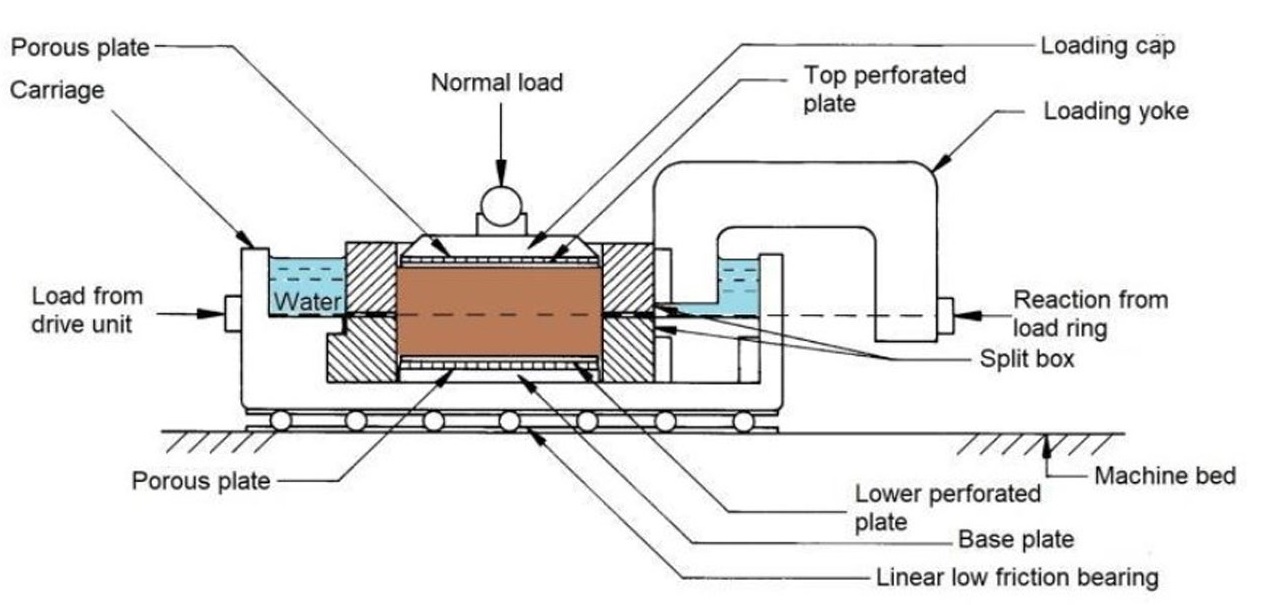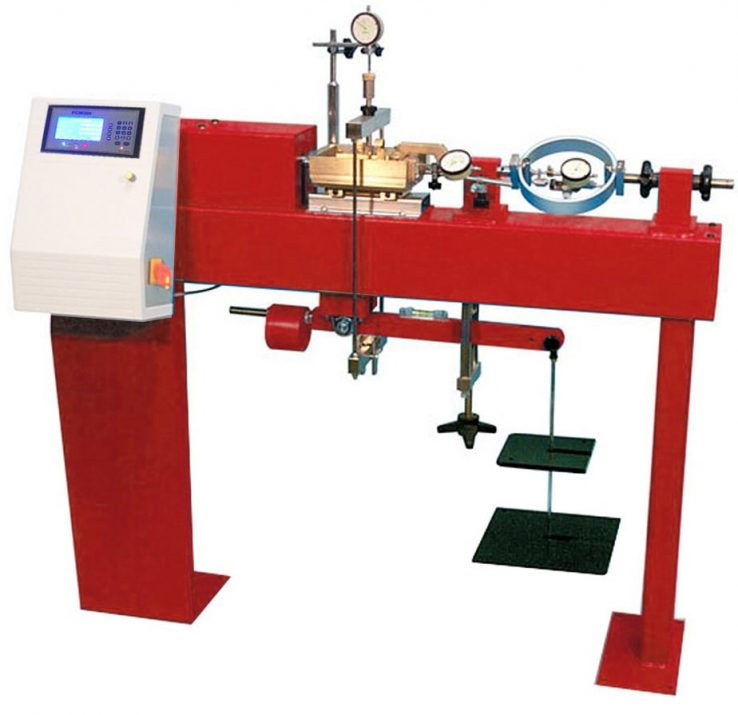Soil Direct Shear Test
General Procedure
Direct shear test has been designed to estimate the shear strength properties of soil or rock material. Also it can carried out to gain insight about discontinuities in soil or rock masses.
The test is usually carried out on four soil specimens. To reach accurate results, It is important to use relatively undisturbed soil sample. As it is shown in the figure, The specimen is placed in the shear box. A certain amount of confining stress is applied to the specimen. Next a gradually increasing lateral load is applied to the upper part of the shear box, until soil fail. This process is repeated with 2 or 3 other confining stress. Finally the failure points are plotted on a 2D coordinated system in which y-axis and x-axis represents residual stress and the confining stress respectively. The y-intercept of the best fit give an estimation of soil cohesion, and the slope of the line is the friction angle.
Direct shear tests can be carried out for both saturated samples and samples with in-situ moisture content. The high rate of lateral loading can create undrained condition, while slow loading simulates the drained condition of the soil.

Shear box and soil specimen
Advantages
Obviously simplicity and low expenses are 2 significant benefits of Direct shear test. Moreover, as it is mentioned earlier this test can be carried out under differing conditions of saturation, drainage, and consolidation.
Disadvantages
On the other hand, the amount of pore-water pressure is unknown for undrained conditions, and forcing the failure plane to occur in a specific location is two man drawbacks.
The detailed procedure of shear test has been describe by international codes such as ASTM D 3080, AASHTO T236 and BS 1377-7:1990.



Comments